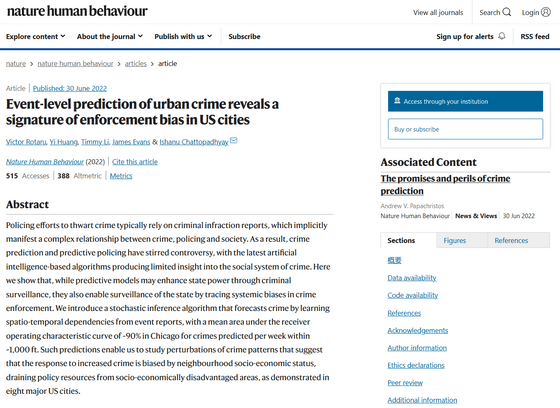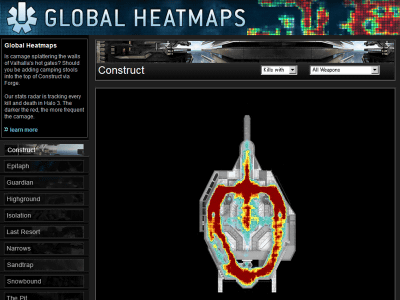A model that predicts the probability of crime occurring in one week with 90% accuracy has appeared

Researchers at the University of Chicago have developed a model that learns time and place patterns from publicly available data on violent and property offenders and predicts the probability of a crime one week later with 90% accuracy. Did.
Event-level prediction of urban crime reveals a signature of enforcement bias in US cities | Nature Human Behavior
https://www.nature.com/articles/s41562-022-01372-0

AI Algorithm Predicts Future Crimes One Week in Advance With 90% Accuracy
Victor Rotaru and colleagues at Chicago University, who developed the model, referred to public records of murder, injury, and assault violence and property offenders of robbery, theft, and car theft, and were reported or arrested for each crime. By analyzing the number of people with a model learned from urban crime statistics, demographic composition, poverty, high degree of dissatisfaction with neighbors, weather data, etc., the probability of crime occurrence in one week is predicted with an accuracy of 90% or more. I insist that I can.
In the conventional model, the city is divided by the jurisdiction of each police station or the transportation network, and it is predicted that if a crime occurs in one place, the effect will spread evenly to the surroundings like a wave. However, Rotaru et al.'S model divides the city into tiles of about 1000 feet (about 300 m) square and predicts the probability for each tile, which makes it less susceptible to bias and improves accuracy. We have succeeded in increasing it. Rotaru and colleagues predicted that crime would occur unevenly rather than spread uniformly.

Rotaru and colleagues claim that the model worked in eight cities, including Chicago, Atlanta, Austin, and Detroit in the United States. Rotaru and colleagues also found that crimes in rich areas were more arrested and crimes in poor areas were less arrested, with police devoting too much resources to poor areas. He argued that there may be a bias in response and execution.
Lead author Ishanu Chattopadhyay said, 'The accuracy of this model should not be used as an indicator for police to be dispatched, but as a tool for urban policy and police strategy to deal with crime. That's it. '
Related Posts:
in Posted by log1p_kr







